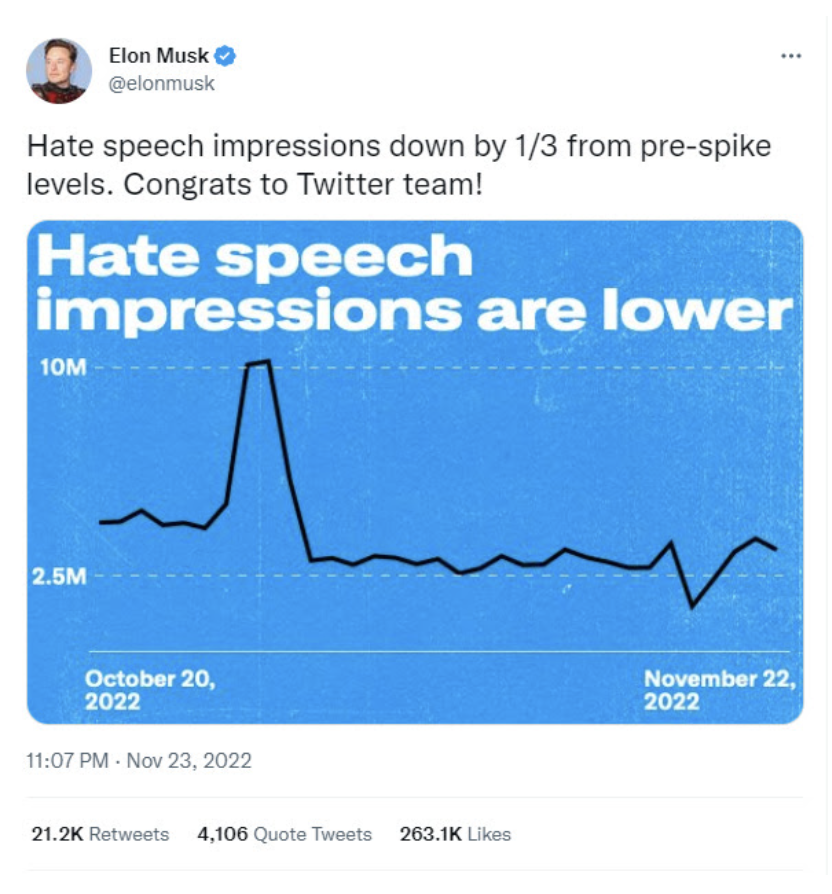Why Marketers Are Slow to Embrace Text-to-Image AI
Today In Digital Marketing is a daily podcast and daily newsletter showcasing the latest in marketing trends and updates. This week, Tod touches on:
Meta's New "Additional Attributed" Conversions
Moving Slowly on AI for Creative
Google Axes Duplex on the Web
YouTube Ads Leaderboard
Musk’s Twitter a Breeding Ground for Hate Speech
Small YouTube Upgrade
Below is the transcription from this week’s topics
Meta's New "Additional Attributed" Conversions
Meta is improving its conversion reporting, with a new feature coming to your ad account soon called Additional Attributed Conversions.
This will show you the percentage of additional conversions that Meta is able to attribute to your ad account, as a result of having the Conversions API on. This is using a 28 day window.
But you won't find it in Ads Manager; instead, it's in your Events Manager, and here's how to see it:
Go to Events Manager.
Click the Data sources tab on the left side of the page.
Select the name and ID of your data.
Scroll down to the table that shows your events.
Click on an event to expand it. The additional attributed conversions percentage is in the top-left corner.
They've just started to roll this out, so it may not be there for you yet, but it's coming.
Shane Cicero from JW Media noted in Andrew Foxwell's Slack community:
The value here I think comes to ad buyers/agencies who have clients that have not moved over to CAPI just yet. They can use this data from other client accounts to show the improved efficiency of attribution. It's also a big help when running health checks on client accounts to help catch possible fluctuations that do happen from time to time with tracking.
He also did a breakdown of what you can infer from that percentage being high, and what you can get from it being low... you can check out the Foxwell Founders Slack Community by using our affiliate link: b.link/founders
MORE:
Moving Slowly on AI for Creative
The huge ad agency BBDO is exploring how AI-generated creative can be incorporated into its production process.
Until recently, the use of AI for the creation of brand images and copy had been considered experimental, with most programs producing rudimentary results.
An AI's attempt at generating "Tod Maffin on a bicycle"
Internal, Not External
The agency has found the text-to-image tool Stable Diffusion particularly useful for internal use, rather than client-facing production. For instance: creating storyboards for internal campaign visuals or creating art for slide decks. The agency's creative director, quoted in Ad Week today, said they're mostly using it to get brainstorming images faster.
BBDO is also using the tool for training. For instance, they plan to take all of the photos from an upcoming location shoot to train the engine to visualize new places or items in that setting.
But so far, that's as far as it’s gotten. The agency has yet to use the tool's output in a finished campaign.
Cancel Culture Comes for Generative AI
It's that kind of training that is getting the burgeoning industry into trouble.
Today, for instance, a Japanese illustration app announced that it has killed the rollout of its AI image generator tool after backlash from users.
These generators like Stable Diffusion and DALL-E have been criticized for using artists’ work in their training data without permission. So while it may be a creative way to add digital art assets to your brand's library, you might be unintentionally stealing someone's work.
Earlier this week, the company behind the app announced it would be launching the “experimental image generator palette" as part of an upcoming winter update. That update was up for only three days before they cancelled the project.
Their tech was based on the Stable Diffusion AI model — the same one BBDO uses.
Duplex on the Web
Another AI bites the dust — Google is pulling the plug on Duplex on the Web, its AI-powered service that navigated sites to simplify the process of buying food or movie tickets, setting up haircuts, booking restaurant reservations and more.
According to a note posted today on Google's support page, the feature is deprecated, and will no longer be supported as of December 2022. Any automation features enabled by Duplex on the Web will no longer be supported after this date.
A spokesperson for the company told TechCrunch that they are responding to feedback from users and developers about haow to make it better and that “by the end of this year, we’ll turn down Duplex on the Web and fully focus on making AI advancements to the Duplex voice technology that helps people most every day."
Image: Google
Google shuts down Duplex on the Web, its attempt to bring AI smarts to retail sites and more
YouTube Ads Leaderboard
YouTube published its year-end review of the best-performing ads for 2022 yesterday, with tech companies and streamers dominating the list.
The Ads Leaderboard algorithmically assesses advertisements based on:
Organic and paid views
Watch time
Audience retention
Based on the top 10, if you want your ad to be popular on YouTube, your content needs to be funny. That, or include the KPop megaband BTS.
The number 1 spot went to Amazon's Super Bowl commercial, which humorously depicts Scarlett Johansson's and Colin Jost's relationship after Alexa becomes a real mind reader.
Google's creative director explained that "On YouTube, humour and relatable imperfection can show that a brand gets their audience, and that’s reflected in how products and services are advertised."
Other top contenders include:
Telecom Egypt took 2nd place
Apple came in 4th
While HBO Max and Netflix generated engagement with programming-focused promotions
Finally, Squarespace came in 10th
Reading between the lines of YouTube's best-performing ads for 2022
Musk’s Twitter a Breeding Ground for Hate Speech
Remember last week when Elon Musk claimed that "hate speech impressions" on Twitter were down by a third since his takeover?
Let's see how that's going for him.
New research by the Center for Countering Digital Hate has found that the total amount of hate speech on the platform has risen during that same period. I know, shocking.
Hate Speech Has Tripled
According to research, prior to Musk buying the company, over 1,200 tweets with slurs against Black people appeared daily on average on Twitter; after he bought it, that number spiked to almost 4,000. During the week of Musk’s tweet, it increased to over 4,600 tweets a day.
Slurs against transgender people have increased by two-thirds since his takeover.
Engagement on Hate Tweets Soaring
In a recent tweet, Musk said that hateful tweets would be "max deboosted and demonetized" so that users wouldn’t see the content unless they searched for them. But even if views are down, the report found engagement on hate speech is also up:
Prior to Musk's Twitter, the average number of likes, replies, and retweets on posts with slurs was 13.
Since the takeover, average engagements on hateful content have jumped to 50.
Earlier today, Musk called the findings "utterly false" in a tweet responding to a story on the study. He also promised to publish data weekly and maintained his stance that hate speech is declining.
Bye, Bye Ye
We know at least some hateful content has been removed. Elon Musk suspended Kanye West from Twitter after he shared an image of a swastika in a Star of David yesterday. Musk said the suspension was a consequence of violating its rule against "incitement to violence" again.
Small YouTube Upgrade
YouTube has started testing a mobile version of Research in Analytics on the Studio mobile app.
This should give you access to data like content gaps and watch activity for topics based on your channel's audience’s interests. To start, the insights will be limited to activity from U.S.-based viewers.
Credit to Tod Maffin and the Today In Digital Marketing podcast, Produced by engageQ.com






